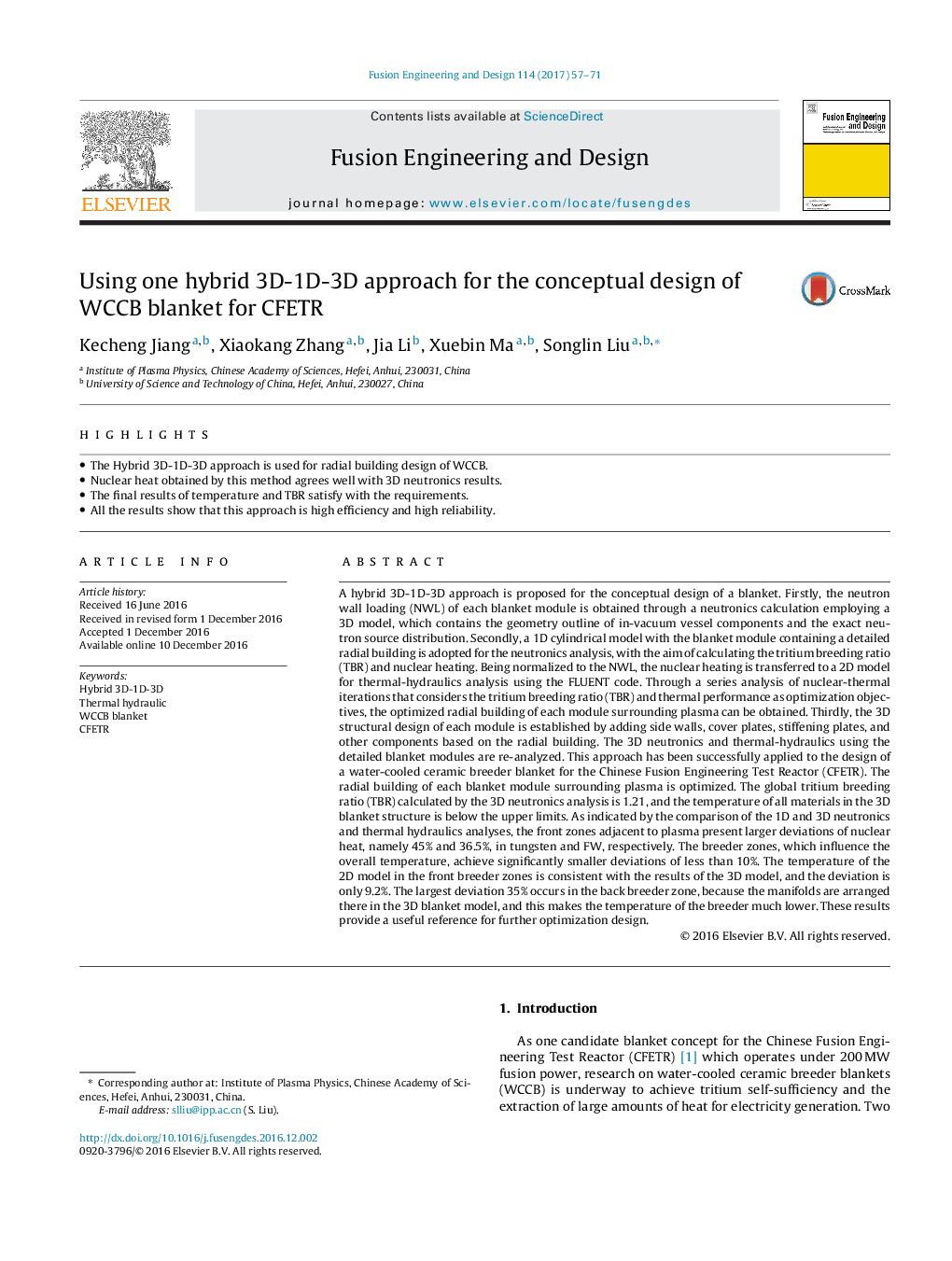| کد مقاله | کد نشریه | سال انتشار | مقاله انگلیسی | نسخه تمام متن |
|---|---|---|---|---|
| 4921158 | 1429339 | 2017 | 15 صفحه PDF | دانلود رایگان |

- The Hybrid 3D-1D-3D approach is used for radial building design of WCCB.
- Nuclear heat obtained by this method agrees well with 3D neutronics results.
- The final results of temperature and TBR satisfy with the requirements.
- All the results show that this approach is high efficiency and high reliability.
A hybrid 3D-1D-3D approach is proposed for the conceptual design of a blanket. Firstly, the neutron wall loading (NWL) of each blanket module is obtained through a neutronics calculation employing a 3D model, which contains the geometry outline of in-vacuum vessel components and the exact neutron source distribution. Secondly, a 1D cylindrical model with the blanket module containing a detailed radial building is adopted for the neutronics analysis, with the aim of calculating the tritium breeding ratio (TBR) and nuclear heating. Being normalized to the NWL, the nuclear heating is transferred to a 2D model for thermal-hydraulics analysis using the FLUENT code. Through a series analysis of nuclear-thermal iterations that considers the tritium breeding ratio (TBR) and thermal performance as optimization objectives, the optimized radial building of each module surrounding plasma can be obtained. Thirdly, the 3D structural design of each module is established by adding side walls, cover plates, stiffening plates, and other components based on the radial building. The 3D neutronics and thermal-hydraulics using the detailed blanket modules are re-analyzed. This approach has been successfully applied to the design of a water-cooled ceramic breeder blanket for the Chinese Fusion Engineering Test Reactor (CFETR). The radial building of each blanket module surrounding plasma is optimized. The global tritium breeding ratio (TBR) calculated by the 3D neutronics analysis is 1.21, and the temperature of all materials in the 3D blanket structure is below the upper limits. As indicated by the comparison of the 1D and 3D neutronics and thermal hydraulics analyses, the front zones adjacent to plasma present larger deviations of nuclear heat, namely 45% and 36.5%, in tungsten and FW, respectively. The breeder zones, which influence the overall temperature, achieve significantly smaller deviations of less than 10%. The temperature of the 2D model in the front breeder zones is consistent with the results of the 3D model, and the deviation is only 9.2%. The largest deviation 35% occurs in the back breeder zone, because the manifolds are arranged there in the 3D blanket model, and this makes the temperature of the breeder much lower. These results provide a useful reference for further optimization design.
Journal: Fusion Engineering and Design - Volume 114, January 2017, Pages 57-71